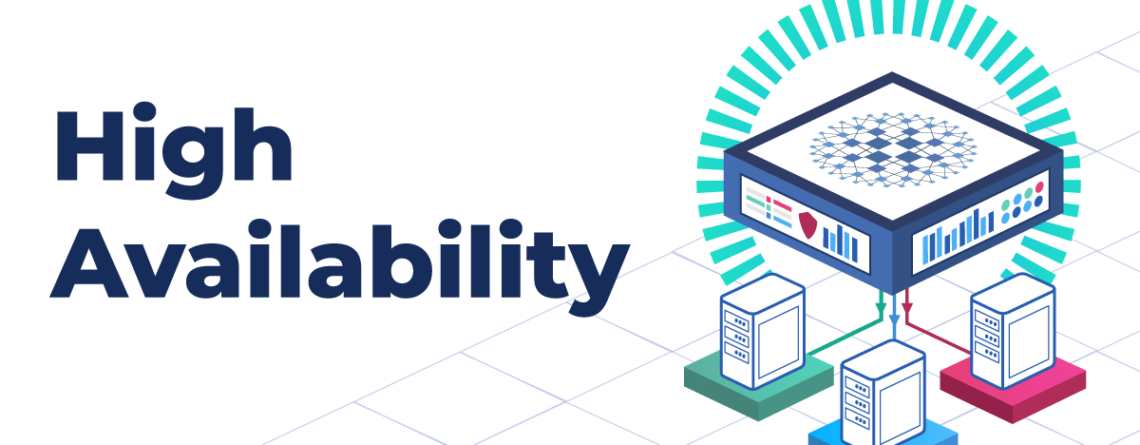Cloud computing has been becoming an integral part of many work processes. As more and more businesses shift their entire data and working on the cloud, managing and using different resources and technologies related to the infinite world of virtual cloud servers and spaces has become inevitable. When you talk about cloud servers, high availability is usually the recommended trait that most experts would like to see in their choice of cloud.
In this article, we give beginners friendly details regarding what this term “high availability” is all about and how does it function in cloud computing.
Understanding High Availability
High Availability refers to a system’s ability to remain operational and accessible for as close to 100% of the time as possible. In simple terms, it means that your website or application stays “up and running” with minimal downtime. The goal of high availability is to eliminate single points of failure and make sure that if one component of the system fails, the rest can still function properly.
This is especially crucial in cloud computing, where businesses rely on third-party cloud platforms like AWS, Google Cloud, or Microsoft Azure to host their applications and data. Cloud environments offer a perfect foundation for high availability because they are designed to be scalable, flexible, and fault-tolerant. Some smaller platforms like Cloudways are also providing high availability hosting on their cloud servers, which are an afforable option for SMBs and bloggers.
The Importance of High Availability
Imagine you’re shopping online during a big sale and the website crashes. Not only do you lose the opportunity to make a purchase, but the company also loses revenue and customer trust. Downtime, even for a few minutes, can be costly. According to studies, the average cost of IT downtime is thousands of dollars per minute.
High availability minimizes these risks by keeping systems resilient and reducing downtime as much as possible. It ensures business continuity, improves user experience, and helps meet service level agreements (SLAs). For industries like finance, healthcare, and communications, where uninterrupted service is critical, high availability is not just a luxury—it’s a necessity.
Core Components of High Availability
High availability is not a single feature or product; it’s a design approach that includes various strategies and components working together. Some of the main elements include:
Redundancy
Redundancy means having backup components that can take over if the primary ones fail. This could be extra servers, duplicate databases, or multiple network connections. In a highly available system, if one server crashes, another one is immediately ready to take over.
Load Balancing
Load balancing distributes traffic across multiple servers to ensure no single server is overwhelmed. It helps improve performance and provides redundancy. If one server goes down, the load balancer redirects traffic to healthy servers without users noticing any disruption.
Failover Systems
Failover is the process of switching to a standby system in the event of a failure. This transition happens automatically and almost instantly in a well-configured high availability setup. Failover systems are a cornerstone of HA strategies.
Clustering
Clustering involves grouping multiple servers together so they act as a single system. If one server in the cluster fails, another can pick up the load. This method increases reliability and helps distribute workloads efficiently.
Data Replication
Data replication ensures that data is copied across multiple locations in real-time or at scheduled intervals. This way, if one data center or storage unit becomes unavailable, another can serve the same data without loss or delay.
Measuring High Availability
High availability is often measured in terms of “uptime,” which is the amount of time a system is operational. The higher the uptime percentage, the more reliable the system. Common uptime targets are:
- 99% uptime = ~3.65 days of downtime per year
- 99.9% (three nines) = ~8.76 hours/year
- 99.99% (four nines) = ~52.6 minutes/year
- 99.999% (five nines) = ~5.26 minutes/year
Each additional “nine” represents a significant improvement in reliability—and often, an increase in cost and complexity.
How Cloud Providers Enable High Availability
Major cloud service providers build high availability into their infrastructure. They offer various tools and services to help customers achieve their own high availability targets.
Amazon Web Services (AWS)
AWS offers services like Elastic Load Balancing, Auto Scaling, Amazon RDS Multi-AZ deployments, and Amazon S3 for highly available storage. It also provides Availability Zones—separate physical locations within a region that help isolate failures.
Microsoft Azure
Azure uses Availability Sets and Availability Zones to protect applications from data center failures. Its Traffic Manager routes users to the best-performing and healthiest endpoints across the globe.
Google Cloud Platform (GCP)
GCP emphasizes redundancy and global infrastructure. It offers multi-regional storage, global load balancing, and persistent disks that are automatically replicated across zones.
Autonomous by Cloudways
Apart from these giants, cloud servers by Autonomous are also providing users with high availablity hosting. Not all businesses can afford to buy from Google or AWS. This is where Cloudways (DigitalOcean being their parent company) comes into play.
Designing High Availability Architecture
Designing a highly available system in the cloud involves a series of best practices and decisions, including:
Multi-Zone and Multi-Region Deployment
Deploying your application in multiple availability zones or regions protects against localized failures. If one zone experiences an outage, the system continues running in another zone.
Stateless Applications
Stateless applications don’t store data locally between requests. This makes it easier to spin up new instances in case of failure. Cloud-native applications are often designed to be stateless for this reason.
Auto Scaling
Auto scaling adjusts the number of servers running based on current demand. This not only improves performance but also ensures availability during peak traffic or sudden spikes.
Backup and Disaster Recovery
Backups should be automated and stored in different geographical locations. A solid disaster recovery (DR) plan ensures that even in catastrophic failures, your systems and data can be restored quickly.
Monitoring and Alerts
Constant monitoring of infrastructure helps detect issues before they become failures. Alerts allow administrators to take quick action and resolve problems in real time.
Challenges in Achieving High Availability
While high availability is desirable, it’s not without challenges. Implementing HA requires:
- Increased complexity in system design and management
- Higher costs due to redundancy and extra resources
- Thorough testing to ensure failover and redundancy work as expected
- Proper configuration, which if done incorrectly, could introduce new points of failure
Even with the best infrastructure, misconfigurations or overlooked dependencies can cause outages. Hence, achieving truly high availability takes careful planning and ongoing maintenance.
High Availability vs Fault Tolerance vs Disaster Recovery
These terms are related but not interchangeable:
- High Availability ensures minimal downtime through redundancy and quick failover.
- Fault Tolerance goes a step further by continuing operation even if some components fail, without any noticeable service disruption.
- Disaster Recovery focuses on restoring services after a significant outage or data loss. It is more about response and recovery than prevention.
In practice, businesses often implement all three as part of a broader resilience strategy.
Real-World Examples of High Availability
Netflix
Netflix operates globally and must deliver content 24/7. It uses a microservices architecture hosted on AWS, with components deployed across multiple availability zones and regions. Its famous Chaos Monkey tool intentionally breaks parts of its system to test how well it handles failures.
Online Banking Systems
Banks require near-perfect uptime. Their platforms use high availability clusters, real-time data replication, and geographically distributed data centers to ensure uninterrupted services even during maintenance or network issues.
E-Commerce Websites
Platforms like Amazon and Shopify are built with high availability principles. Load balancing, caching, auto scaling, and regional redundancy help them handle massive traffic, especially during sales and holidays.
Cost vs Benefit of High Availability
Implementing high availability involves costs—additional infrastructure, skilled personnel, and continuous monitoring. However, the cost of downtime in terms of lost revenue, customer trust, and operational disruptions often outweighs these investments.
For critical applications, the return on investment (ROI) is clear. For less critical systems, businesses may choose a lower level of availability to reduce costs. It’s essential to balance needs with budget and risk tolerance.
The Future of High Availability in Cloud Computing
As businesses increasingly adopt hybrid and multi-cloud strategies, the focus on high availability will only grow. Artificial intelligence and machine learning are being used to predict failures before they happen. Serverless architectures and container orchestration platforms like Kubernetes are also helping improve HA by allowing rapid scaling and recovery.
Edge computing—where data is processed closer to the user—adds a new layer to HA design. As applications become more distributed, high availability must extend beyond centralized cloud regions.
Conclusion
High availability in cloud computing is about more than just uptime—it’s about resilience, trust, and user satisfaction. By eliminating single points of failure and designing systems that can withstand disruption, businesses ensure continuity in a digital-first world.
Whether you’re a developer, IT manager, or business owner, understanding high availability is essential for building reliable and scalable cloud applications. With the right strategies, tools, and mindset, achieving high availability is not only possible—it’s becoming the new standard.



